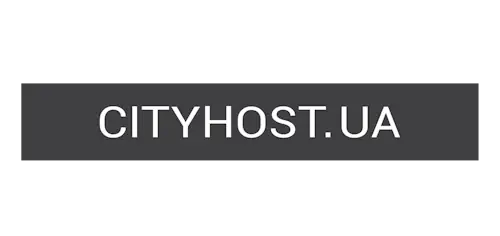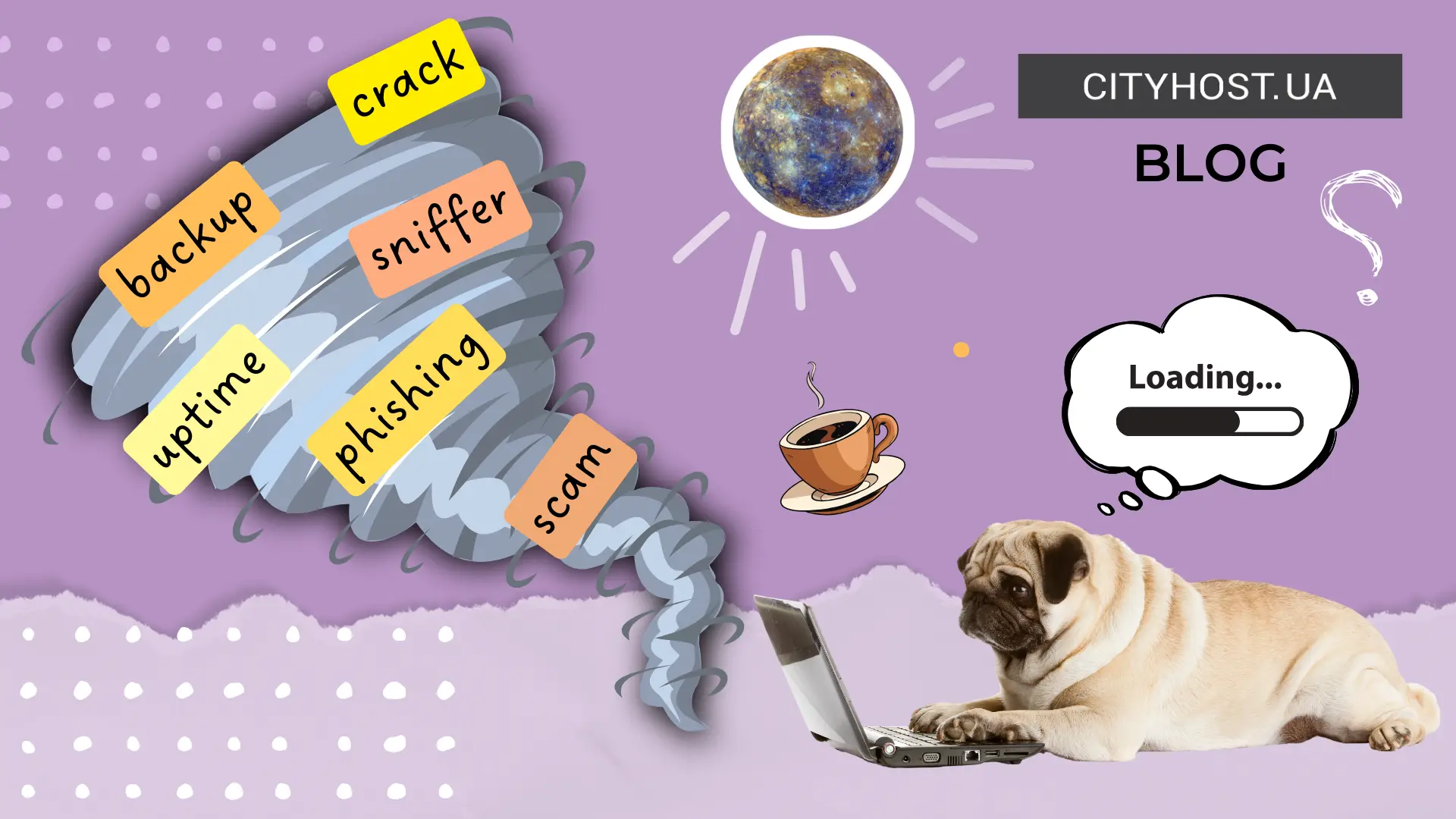
- What is Laravel and How Does It Differ From a CMS
- What is Laravel Used For
- What Tools Does Laravel Offer
- Mastering the Framework: The Best Resources for Learning Laravel
For those looking to create a website without programming, there are many content management systems such as WordPress, Joomla, and Drupal. These systems allow you to develop and manage online projects without coding knowledge. All you need is to buy a domain, rent hosting, install the CMS with a single click, and then customize the template and add content through a graphical interface. For developers, there are also sets of ready-made tools that simplify basic tasks, enabling them to focus on implementing unique features. One of the most popular among these is Laravel — a user-friendly framework with extensive capabilities for those who manually write code in the PHP programming language.
What is Laravel and How Does It Differ From a CMS
Laravel is a free PHP framework that provides numerous useful tools for developing web applications. It allows you to perform basic tasks faster and more easily, such as adding authentication and authorization, sending beautifully formatted notifications via email or SMS, managing database structures using code, and more. This means you don’t have to “reinvent the wheel”, write line-by-line code for repetitive tasks, or look for risky solutions on forums. Instead, this framework offers reliable, clean, and understandable ready-made components.
Read also: What is a database and what is it used for
How is Laravel Different From WordPress
Laravel is a helpful tool for those who already know and use PHP to develop web applications through coding but want to gain more functionality with less effort. WordPress, on the other hand, is a system with an easy-to-use graphical interface that enables you to create web resources without coding, simply by "clicking".
You can indeed create almost any type of website using WordPress or another content management system: from a landing page or blog to an online store, informational resource, or educational project. For example, you find the WooCommerce plugin in the control panel, click “Download” and “Activate”, and now you have an online store where you can easily add and sell products, integrate payment methods, and more. Or you install an educational theme with built-in plugins, allowing you to upload and sell courses or conduct classes directly on your site.
However, with a CMS, the final result depends on the template and plugins. Free options often come with many limitations and can bring problems, such as hidden links or security vulnerabilities. Paid themes cost around $100 per year — not a significant amount, but still an additional expense, especially when you factor in the need to pay copywriters and content managers or build backlinks. Even paid themes have limitations; for instance, MasterStudy does not allow you to freely manage built-in filters or add custom ones. Additionally, remember that the template itself and each plugin place a load on the web resource, reducing page load speed.
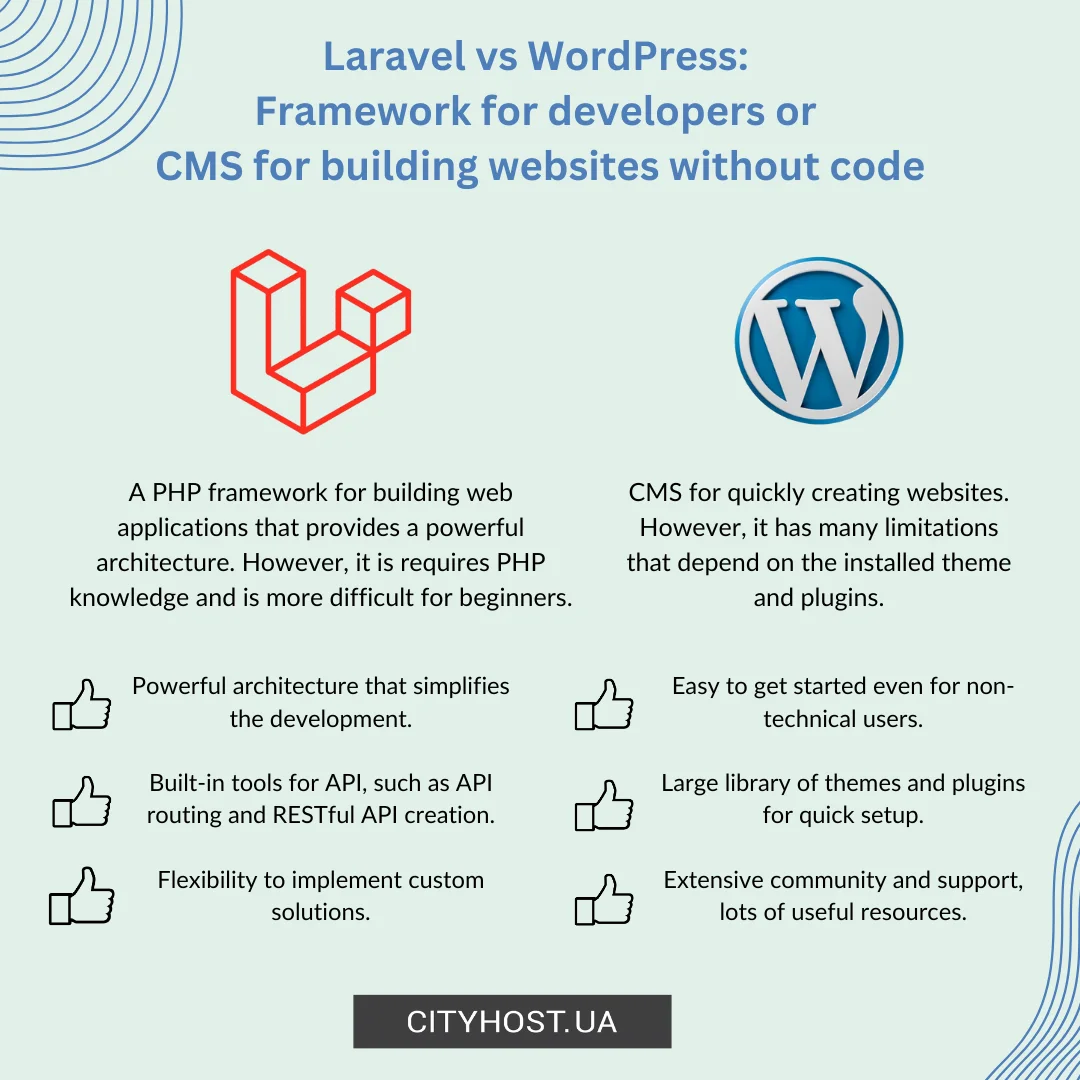
Laravel, on the other hand, gives you complete control over all aspects of your online project. With its tools and libraries, you can add any functionality. As we’ll discuss further, Laravel can be used for virtually anything, depending on your programming skills: whether it’s a simple blog, a custom CRM system, or a fully customized educational platform. Most importantly, your project will be built on clean code without hidden threats, redundancies, or unnecessary lines.
What Is Laravel Used For
Laravel can be used to create blogs, informational websites, forums, educational platforms, and online stores. The framework significantly speeds up the workflow, making it easy and enjoyable.
However, given Laravel's powerful ecosystem, it is even more interesting to use it for larger-scale projects:
- Complex CRM and ERP Systems. For example, a company might want to automatically classify clients based on unique rules, track deal statuses, and synchronize with other services via API.
- Real-Time Systems. Custom chat applications, platforms with online games, activity trackers, and notification systems.
- Educational Platforms with Custom Features. An online education project that automatically adapts learning content based on a student’s progress, such as the number of completed lessons and test results.
- Systems with Custom Logic. Services that automatically analyze user behavior and generate personalized recommendations.
- High-Performance Systems. News portals with thousands of articles and hundreds of thousands of daily visitors, utilizing advanced caching mechanisms.
While content management systems can also be used to build large online stores, marketplaces, or educational platforms, their functionality cannot be fully customized, nor can they handle complex computational tasks. The Laravel framework, on the other hand, provides many ready-made solutions that save developers time and simplify the creation of even the most complex platforms. It is ideal for projects that require a custom, powerful, and reliable system that would be difficult or impossible to implement using a CMS.
What Tools Does Laravel Offer
As we mentioned, Laravel is a framework that provides a set of tools, libraries, and guidelines for creating web applications. Its advantages include elegant and clear syntax, secure hashed passwords, protection against cross-site request forgery (CSRF), a built-in caching system, support for asynchronous tasks, and scalability.
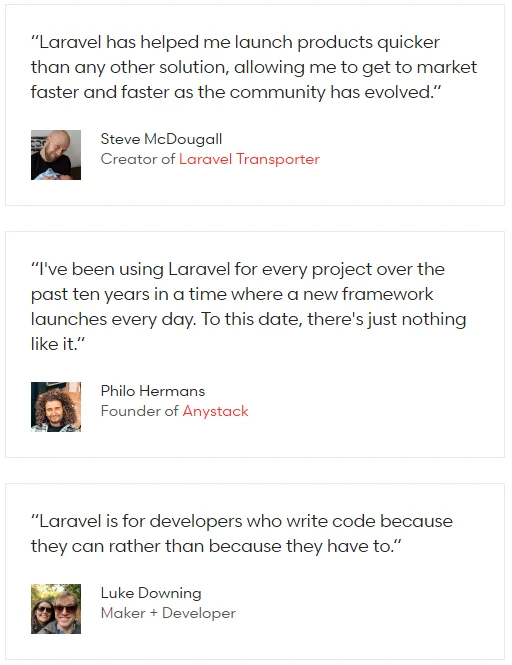
Additionally, Laravel's modular architecture (MVC) enhances its appeal: model (M) handles data operations, view (V) displays data to the user, controller (C) manages the interaction between the model and view. The MVC design simplifies navigation, maintenance, optimization, and project scaling.
What truly sets Laravel apart is its robust set of tools and libraries, making it one of the most popular frameworks among developers. Let’s explore some of Laravel’s key tools:
- Artisan. The command-line interface that automates repetitive coding tasks, saving developers from manual effort.
- Eloquent Object-Relational Mapping (ORM). Simplifies database management by enabling developers to work with databases using object-oriented syntax. The built-in migration system allows updates and schema changes without writing complex SQL queries.
- Blade Template Engine. A templating tool for creating dynamic pages using conditional statements and loops, enabling quick changes to a website's appearance.
- Routing. Laravel supports RESTful routing for building APIs. It provides an easy way to define paths to pages or APIs and allows for middleware layers to process requests.
- Authentication. A few commands are all it takes to set up secure and user-friendly authentication and authorization. The library includes useful features such as user tracking and protection against unauthorized requests.
- Queues. The task queue system allows complex processes to run in the background, improving application performance.
- Unit Testing. Laravel includes built-in support for PHPUnit, enabling developers to test application functionality and identify bugs early in development.
- Task Scheduling. Laravel offers a task scheduler that serves as a robust alternative to Linux’s cron. Developers can manage recurring processes directly through code, such as scheduling backups.
Using these tools, Laravel enables the creation of projects of any scale from scratch. And if your project requires additional capabilities, Laravel offers Composer — a package manager that allows you to integrate third-party libraries or create custom packages.
Mastering the Framework: The Best Resources for Learning Laravel
We’ve compiled a list of the best resources for learning Laravel, but first, let’s address an important point for beginner developers. Laravel is a backend framework used for developing the server side, such as working with databases, handling requests, managing authentication and authorization, and implementing business logic. However, you can combine it with frontend frameworks like React, Vue.js, or Angular.
Now, let’s move on to the best resources for learning Laravel:
- Official Laravel Website. Learn more about the framework’s features and ecosystem, stay updated on the latest news, and find helpful articles. The official documentation provides clear guidance on installation, setup, and answers to frequently asked questions.
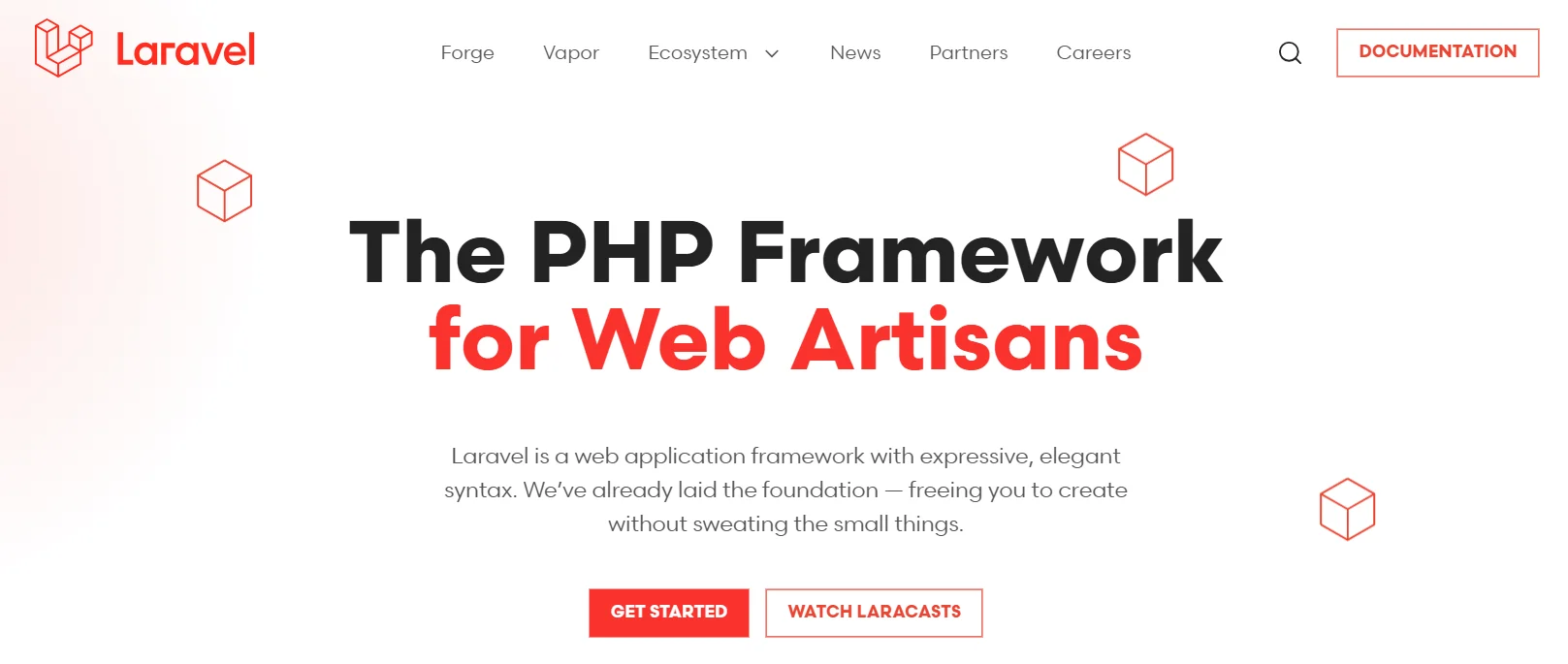
- Laracasts Video Platform. This platform hosts over 1500 video tutorials on Laravel, covering routing, databases, and other essential topics in detail. Start with free materials, and if needed, purchase access to premium tutorials.
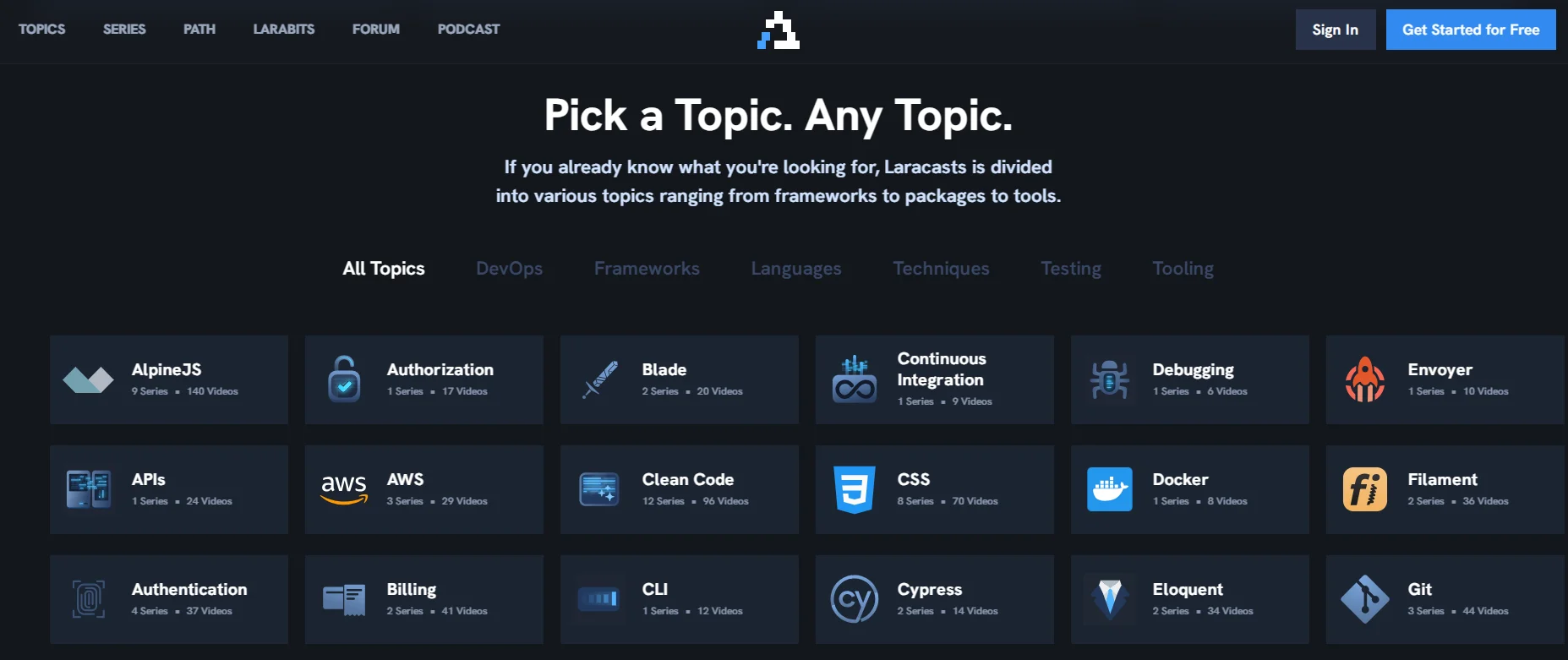
- Online Course Platforms. Websites like Codecourse, Codecademy, Udemy, and others offer paid and free Laravel courses featuring videos, articles, practical exercises, and testing.
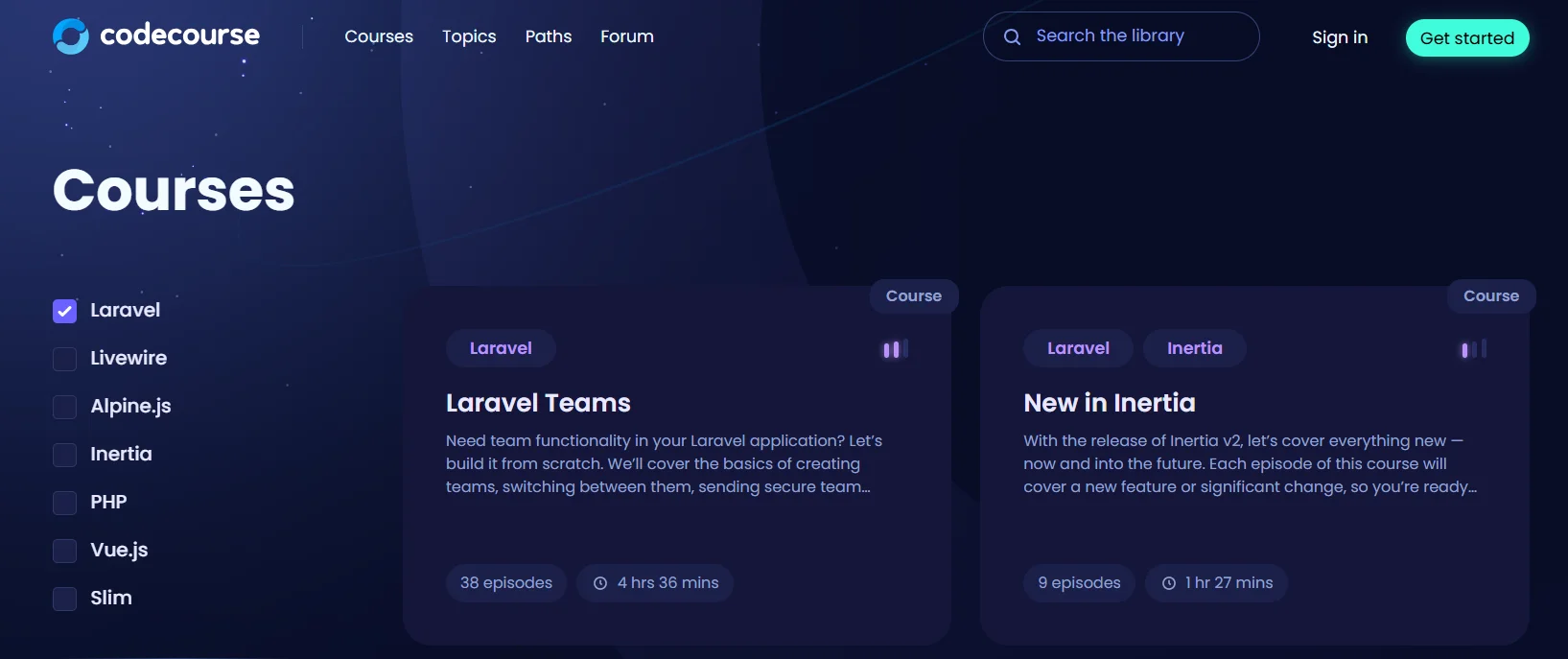
- Laravel News and Laravel Daily Websites. These informational resources provide step-by-step guides, blogs with answers to frequently asked questions, developer tips, ready-made feature packages, podcasts, and news.
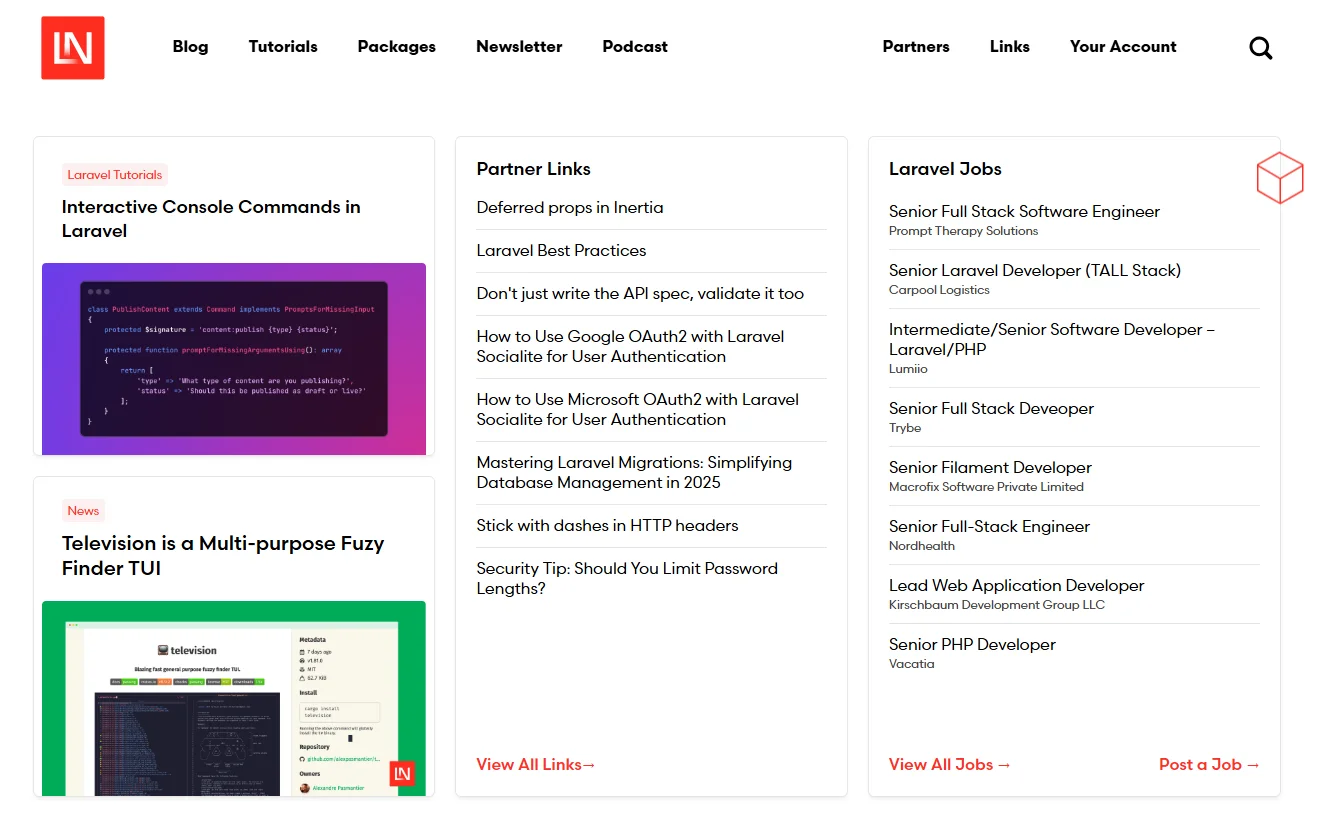
- Laravel.io Portal. A large community of Laravel developers where you can find answers to your questions, discuss challenges, and share experiences with other web developers.
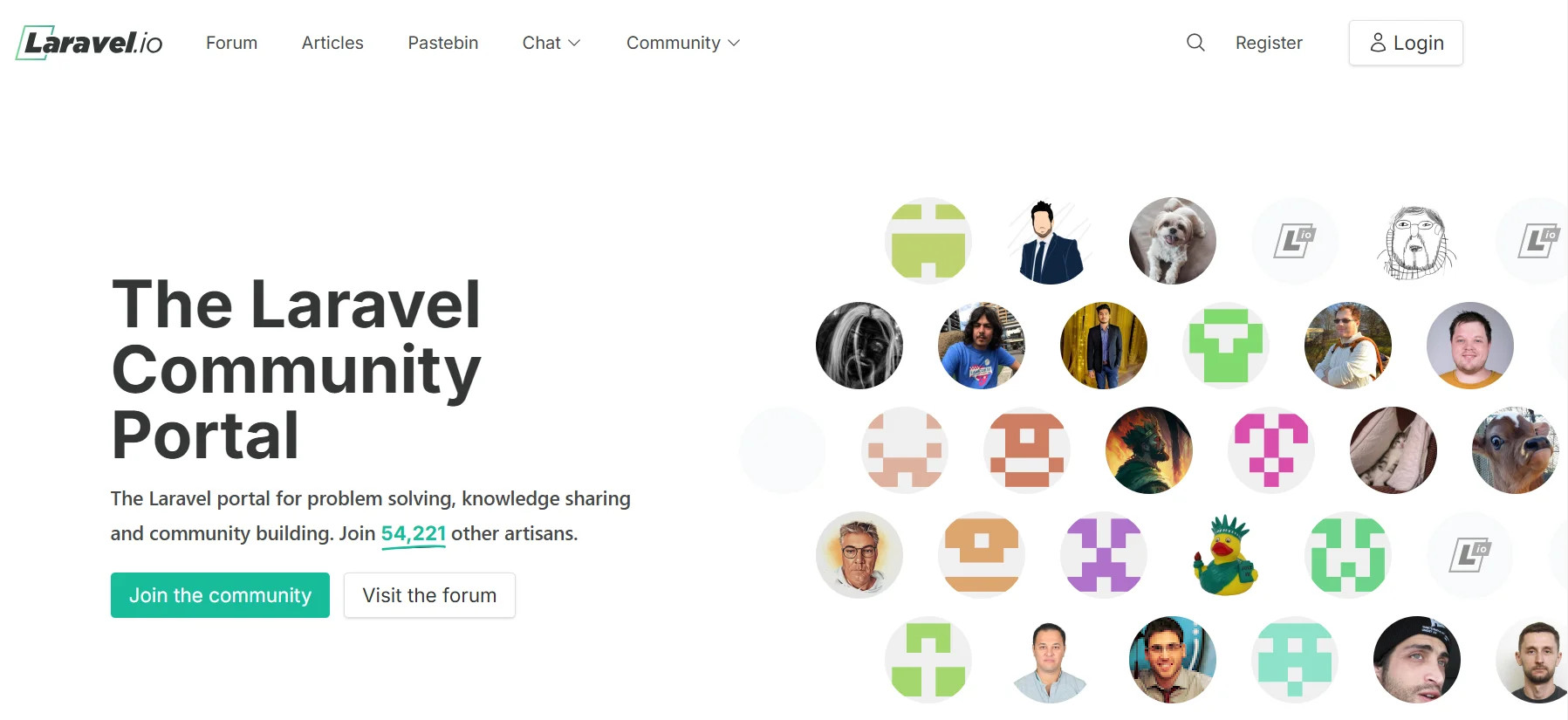
- Stack Overflow. The largest developer community where you can find answers to questions about various technologies, including Laravel.
- YouTube channels about Laravel. One of the best is the official channel of the framework, Laravel Daily with instructions and demo projects, Tony Xhepa (also tutorials and demo projects). There are also many playlists, for example, 30 Days to Learn Laravel from Laracasts, Learn Laravel The Right Way from Program With Gio, PHP Laravel Tutorial for Beginners from ProgrammingKnowledge.
With access to free and paid resources and a large developer community, mastering this popular framework from scratch is achievable. Laravel’s built-in tools, combined with integration capabilities for third-party libraries and services, allow developers to build functional projects of any type and scale. While learning Laravel requires effort and time, the opportunities it offers make it well worth the investment. Plus, now you know more about this PHP framework and have a list of top resources you can bookmark and return to anytime to simplify your learning journey!
